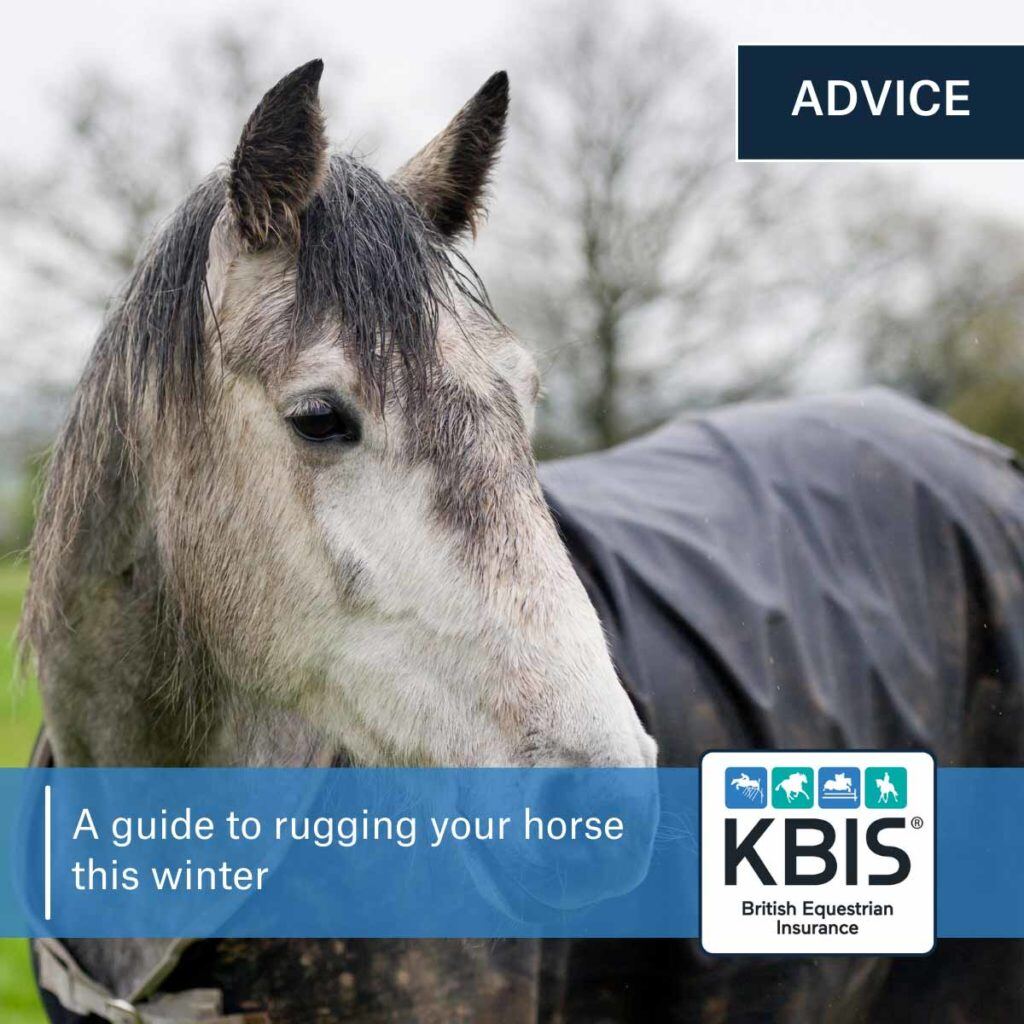Not sure where to start? Conscious of over-rugging but also not wanting your horse to be cold? Are you on the fence about what is best for your four-legged friend?
The truth is, there is no right or wrong answer – every horse is different.
Use this guide to familiarise yourself with the dos and don’ts of rugging this winter.
Why do we rug horses?
There are many reasons that owners rug their horses, from keeping them clean after grooming to repelling insects in the summer months. Generally, they are used to shield against the cold in the Autumn/Winter months.
Do all horses need rugs?
It isn’t always necessary to rug all horses. Many young and healthy horses cope well without rugs so it’s important to bear in mind that the decision should be made on an individual basis. Horses naturally grow a thick winter coat to keep them warm in the winter months. The coat also produces oils to help keep them waterproof.
Like humans, horses maintain a core body temperature of around 38°C through a process called thermoregulation. It is a balancing act between heat lost and heat produced, and external triggers – such as a drop in temperature – prompt a series of actions to rebalance it.
For the process to occur, horses require extra calories from food and should have the good access to forage. Food provides energy and generates heat as it is broken down. This warms the horse from the inside. Eating is heating.
As a general rule, horses can comfortably withstand temperatures between 5°C and 25°C. The key is to not judge how hot or cold we think our horse is based on our own sensitivities to the cold.
Should I rug my horse?
Before rugging, consider your horse’s level of work, stable management and access to forage. Being regularly rugged and stabled can be damaging as it can dampen the horse’s natural ability to respond to external triggers (such as a drop in temperature).
Cold, wet and windy weather conditions are the most demanding and can make a difference to whether horses are warm enough.
A well-fitted rug can also be useful for horses that are regularly stabled or have difficulties regulating their own temperature:
- Thoroughbred or Arab: These horses have naturally thinner coats and may benefit from the extra warmth of a rug.
- Fully Clipped Horses: When cold, a horse’s hair stands on end creating an insulating layer of heat. Horses that are unable to produce heat through this method may require extra warmth.
- Old and ill horses: These horses often struggle to self-regulate their temperature. Older horses can also have an arthritic flare up in cold and damp temperatures. This restricts movement and reduces the creation of body heat.
- Underweight Horses: Rugging can prevent weight loss by slowing down the thermoregulation process. The energy saved becomes part of the horse’s fat reserves.
When should you rug your horse?
Most horses won’t need to be rugged until temperatures drop to around 5-10 degrees but even at these levels, they will generally do well. If it’s cold, wet and windy they might be feeling the chill. Use this temperature guide to help you decide the type of rug to use and when to use which:

*These guidelines should be considered in conjunction with your horse’s stable management routine, access to forage, feeding regime, level of work and condition.
Dangers of Over-Rugging
Difficulties managing weight: Horses naturally gain weight over summer and lose it in the winter. A lot of energy is required for horses to stay warm in cold temperatures. By over-rugging, you risk eliminating the horse’s natural ability to regulate their core temperature. This can lead to weight gain which can increase the risk of laminitis, a disease that can be fatal.
Did you know? Not rugging overweight horses in winter is a natural way of aiding weight loss.
Risk of overheating: Horses lose the ability to cool themselves down when they are over-rugged which can be particularly problematic in the Autumn and Spring months. Temperature fluctuations can differ as much as 10 degrees throughout the day: a rug that was appropriate in the morning, can lead to overheating by the afternoon.
Did you know? Overheating can cause colic symptoms and leave horses feeling distressed as they struggle to cool down.
Risk of skin infections/rug rubs: When a horse overheats, blood is diverted to the skin surface to remove excess heat through sweating. This creates a warm and moist environment which increases the risk of bacterial skin infections and rug rubs.
Tip: Check regularly for signs of sores and remove any mud that gets trapped where the tack is fitted – particularly after riding.
Vitamin D2 deficiency: Keeping a rug on a horse all day can prevent sunlight getting to the horse’s skin. This can limit the production of vitamin D2 leading to reduced bone strength.
Tip: Leaving your horse naked for at least one hour a day in daytime hours can prevent a vitamin D2 deficiency.
In summary…
The decision to rug should be assessed according to the horse’s individual needs. Healthy horses are able to naturally withstand cold temperatures providing they have access to shelter & plenty of forage. Horses which have been clipped or are unable to regulate their body temperature will benefit from rugging. Take care to prevent your horse from overheating in the Autumn months, and make sure your horse has a well-fitted rug to stop infection and rug rubs.


